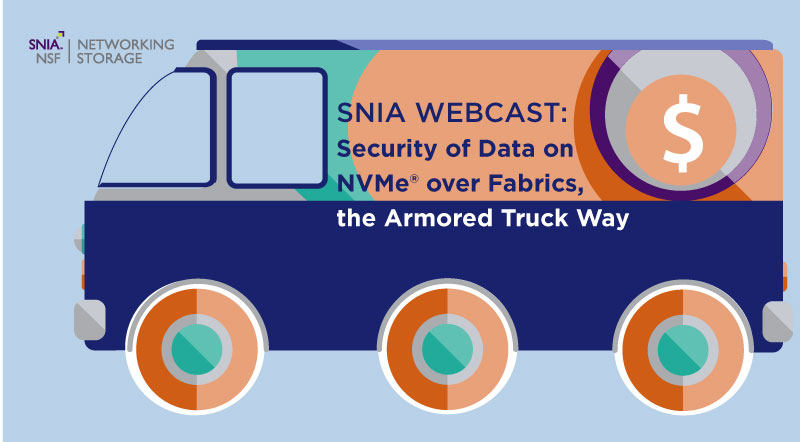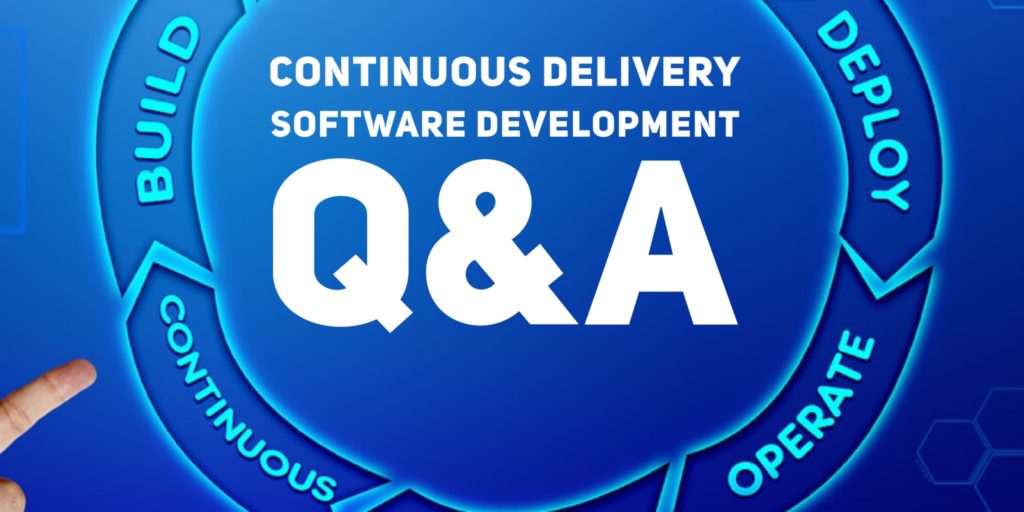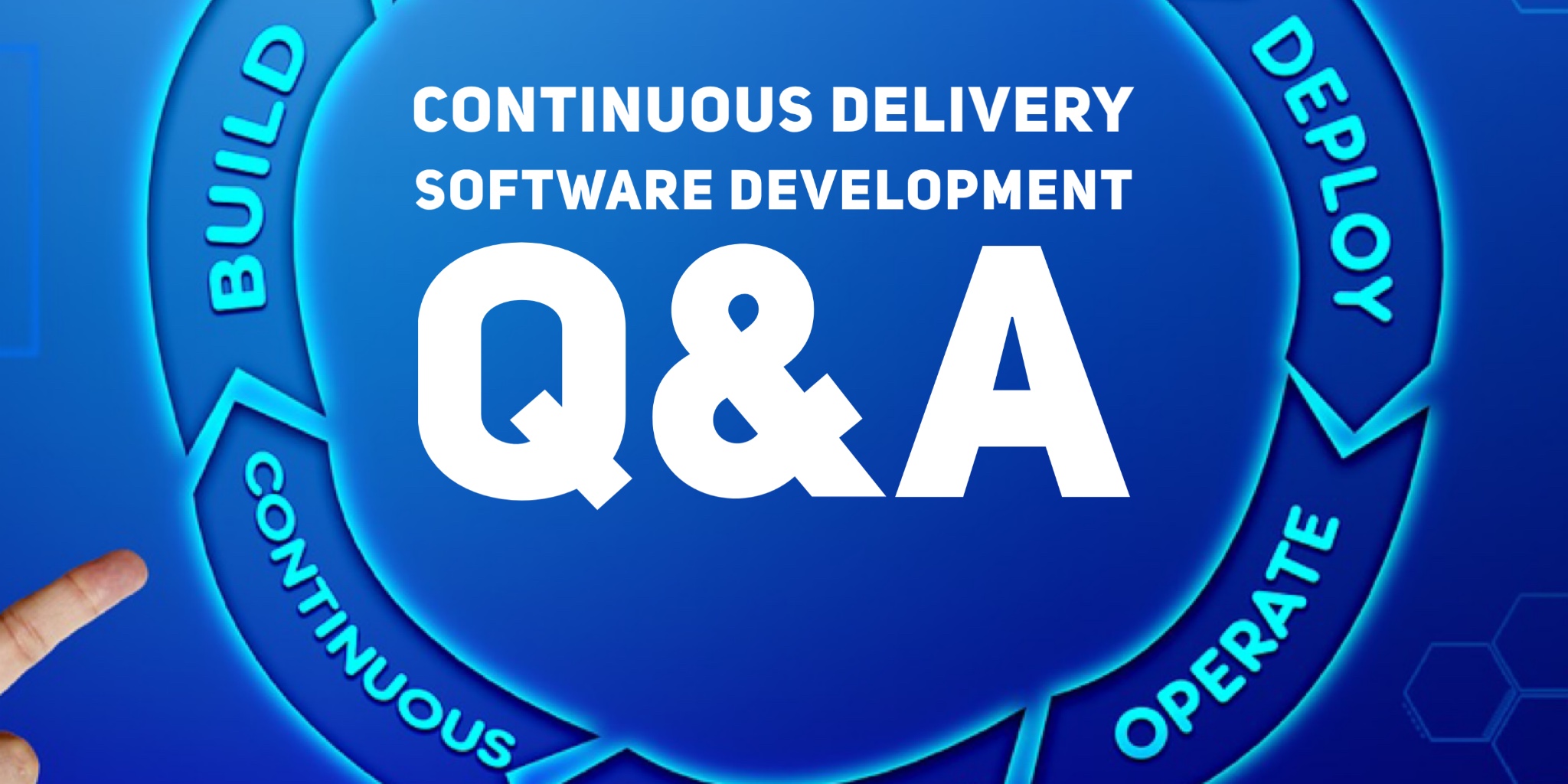- Industry trends and regulations around data security
- Potential threats and vulnerabilities
- Existing security mechanisms and best practices
- How to secure NVMe data in flight and at rest
- Ecosystem and market dynamics
- Upcoming standards

Protecting NVMe over Fabrics Data from Day One, The Armored Truck Way
Apr 27, 2021

Continuous Delivery Software Development Q&A
Apr 26, 2021

- Do you want to move to a Continuous Delivery model?
- Are you willing to meet to discover what is preventing your team from working in a CD manner, and then hold yourselves accountable to making improvement?
- Are you able to repeat the second step regularly?
Find a similar article by tags
UncategorizedLeave a Reply
Continuous Delivery Software Development Q&A
Apr 26, 2021

- Do you want to move to a Continuous Delivery model?
- Are you willing to meet to discover what is preventing your team from working in a CD manner, and then hold yourselves accountable to making improvement?
- Are you able to repeat the second step regularly?
Find a similar article by tags
Cloud StorageLeave a Reply
A Q&A on NVMe-oF Performance Hero Numbers
Apr 13, 2021

Find a similar article by tags
NVMe-oFLeave a Reply
Continuing to Refine and Define Computational Storage
Mar 31, 2021

The SNIA Computational Storage Technical Work Group (TWG) has been hard at work on the SNIA Technical Document Computational Storage Architecture and Programming Model. SNIAOnStorage recently sat down via zoom with the document editor Bill Martin of Samsung and TWG Co-Chairs Jason Molgaard of Arm and Scott Shadley of NGD Systems to understand the work included in the model and why definitions of computational storage are so important.
SNIAOnStorage (SOS): Shall we start with the fundamentals? Just what is the Computational Storage Architecture and Programming Model?
Scott Shadley (SS): The SNIA Computational Storage Architecture and Programming Model (Model) introduces the framework of how to use a new tool to architect your infrastructure by deploying compute resources in the storage layer.
Bill Martin (BM): The Model enables architecture and programming of computational storage devices. These kinds of devices include those with storage physically attached, and also those with storage not physically attached but considered computational because the devices are associated with storage.
SOS: How did the TWG approach creating the Model and what does it cover?
SS: SNIA is known for bringing standardization to customized operations; and with the Model, users now have a common way to identify the different solutions offered in computational storage devices and a standard way to discover and interact with these devices. Like the way NVMe brought common interaction to the wild west of PCIe, the SNIA Model ensures the many computational storage products already on the market can align to interact in a common way, minimizing the need for unique programming to use solutions most effectively.
Jason Molgaard (JM): The Model covers both the hardware architecture and software application programming interface (API) for developing and interacting with computational storage.
BM: The architecture sections of the Model cover the components that make up computational storage and the API provides a programming interface to those components.
SOS: I know the TWG members have had many discussions to develop standard terms for computational storage. Can you share some of these definitions and why it was important to come to consensus?
BM: The model defines Computational Storage Devices (CSxs) which are composed of Computational Storage Processors (CSPs), Computational Storage Drives (CSDs), and Computational Storage Arrays (CSAs).
Each Computational Storage Device contains a Computational Storage Engine (CSE) and some form of host accessible memory for that engine to utilize.
The Computational Storage Processor is a device that has a Computational Storage Engine but does not contain storage. The Computational Storage Drive contains a Computational Storage Engine and storage. And the Computational Storage Array contains an array with an array processor and a Computational Storage Engine.
Finally, the Computational Storage Engine executes Computational Storage Functions (CSFs) which are the entities that define the particular computation.
All of the computational storage terms can be found online in the SNIA Dictionary.
SS: An architecture and programing model is necessary to allow vendor-neutral, interoperable implementations of this industry architecture, and clear, accurate definitions help to define how the computational storage hierarchy works. The TWG spent many hours to define these standard nomenclatures to be used by providers of computational storage products.
JM: It has been a work in process over the last 18 months, and the perspectives of all the different TWG member companies have brought more clarity to the terms and refined them to better meet the needs of the ecosystem.
BM: One example has been the change of what was called computational storage services to the more accurate and descriptive Computational Storage Functions. The Model defines a list of potential functions such as compression/decompression, encoding/decoding, and database search. These and many more are described in the document.
SOS: Is SNIA working with the industry on computational storage standards?
BM: SNIA has an alliance with the NVM Express® organization and they are working on computational storage. As other organizations (e.g., CXL Consortium) develop computational storage for their interface, SNIA will pursue alliances with those organizations. You can find details on SNIA alliances here.
SS: SNIA is also monitoring other Technical Work Group activity inside SNIA such as the Smart Data Accelerator Interface (SDXI) TWG working on the memory layer and efforts around Security, which is a key topic being investigated now.
SOS: Is a new release of the Computational Storage Architecture and Programming Model pending?
BM: Stay tuned, the next release of the Model – v.06 - is coming very soon. It will contain updates and an expansion of the architecture.
JM: We have also been working on an API document which will be released at the same time as the V.6 release of the Model.
SOS: Who will write the software based on the Computational Storage Architecture and Programming Model?
JM: Computational Storage TWG members will develop open-source software aligned with the API, and application programmers will use those libraries.
SOS: How can the public find out about the next release of the Model?
SS: We will announce it via our SNIA Matters newsletter. Version 0.6 of the Model as well as the API will be up for public review and comment at this link. And we encourage companies interested in the future of computational storage to join SNIA and contribute to the further development of the Model and the API. You can reach us with your questions and comments at askcmsi@snia.org.
SOS: Where can our readers learn more about computational storage?
SS: Eli Tiomkin, Chair of the SNIA Computational Storage Special Interest Group (CS SIG), Jason, and I sat down to discuss the future of computational storage in January 2021. The CS SIG also has a series of videos that provide a great way to get up to speed on computational storage. You can find them and “Geek Out on Computational Storage” here,
SOS: Thanks for the update, and we’ll look forward to a future SNIA webcast on your computational storage work.
Leave a Reply
Continuing to Refine and Define Computational Storage
Mar 31, 2021

Leave a Reply
Another Great Storage Debate: Hyperconverged vs. Disaggregated vs. Centralized
Mar 26, 2021

The SNIA Networking Storage Forum’s “Great Storage Debate” webcast series is back! This time, SNIA experts will be discussing the ongoing evolution of the data center, in particular how storage is allocated and managed. There are three competing visions about how storage should be done: Hyperconverged Infrastructure (HCI), Disaggregated Storage, and Centralized Storage. Join us on May 4, 2021 for our live webcast Great Storage Debate: Hyperconverged vs. Disaggregated vs. Centralized.
IT architects, storage vendors, and industry analysts argue constantly over which is the best approach and even the exact definition of each. Isn’t Hyperconverged constrained? Is Disaggregated designed only for large cloud service providers? Is Centralized storage only for legacy applications?
Tune in to debate these questions and more:
- What is the difference between centralized, hyperconverged, and disaggregated infrastructure, when it comes to storage?
- Where does the storage controller or storage intelligence live in each?
- How and where can the storage capacity and intelligence be distributed?
- What is the difference between distributing the compute or application and distributing the storage?
- What is the role of a JBOF or EBOF (Just a Bunch of Flash or Ethernet Bunch of Flash) in these storage models?
- What are the implications for data center, cloud, and edge?
Register today as leading storage minds converge to argue the definitions and merits of where to put the storage and storage intelligence.
For anyone not familiar with the Great Storage Debates it is very important to note that this series isn’t about winners and losers; it’s about providing essential compare and contrast information between similar technologies. We won’t settle any arguments as to which is better – but we will debate the arguments, point out advantages and disadvantages, and make the case for specific use cases.
To date, the SNIA NSF has hosted several great storage debates, including: File vs. Block vs. Object Storage, Fibre Channel vs. iSCSI, FCoE vs. iSCSI vs. iSER, RoCE vs. iWARP, and Centralized vs. Distributed. You can view them all on our SNIAVideo YouTube Channel.
Find a similar article by tags
Networked StorageLeave a Reply
Another Great Storage Debate: Hyperconverged vs. Disaggregated vs. Centralized
Mar 26, 2021

- What is the difference between centralized, hyperconverged, and disaggregated infrastructure, when it comes to storage?
- Where does the storage controller or storage intelligence live in each?
- How and where can the storage capacity and intelligence be distributed?
- What is the difference between distributing the compute or application and distributing the storage?
- What is the role of a JBOF or EBOF (Just a Bunch of Flash or Ethernet Bunch of Flash) in these storage models?
- What are the implications for data center, cloud, and edge?
Find a similar article by tags
Hyperconverged Infrastructure Hyperconverged Infrastructure Networked StorageLeave a Reply
Q&A on the Ethics of AI
Mar 25, 2021

Find a similar article by tags
UncategorizedLeave a Reply
Q&A on the Ethics of AI
Mar 25, 2021








Leave a Reply